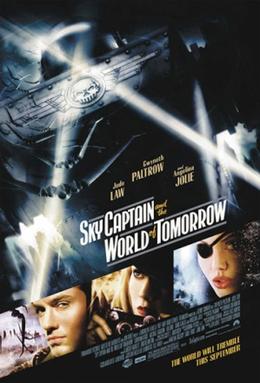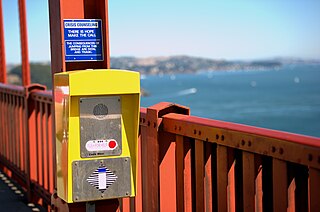Telepresence refers to a set of technologies which allow a person to feel as if they were present, to give the appearance or effect of being present via telerobotics, at a place other than their true location.
Visual effects is the process by which imagery is created or manipulated outside the context of a live-action shot in filmmaking and video production. The integration of live-action footage and other live-action footage or CGI elements to create realistic imagery is called VFX.

Sousveillance is the recording of an activity by a member of the public, rather than a person or organisation in authority, typically by way of small wearable or portable personal technologies. The term, coined by Steve Mann, stems from the contrasting French words sur, meaning "above", and sous, meaning "below", i.e. "surveillance" denotes the "eye-in-the-sky" watching from above, whereas "sousveillance" denotes bringing the means of observation down to human level, either physically or hierarchically.

Sky Captain and the World of Tomorrow, often shortened to Sky Captain, is a 2004 science fiction action-adventure film written and directed by Kerry Conran in his directorial debut, and produced by Jon Avnet, Sadie Frost, Jude Law and Marsha Oglesby. It stars Jude Law, Gwyneth Paltrow, and Angelina Jolie. It is an example of "Ottensian" (pre-WWII) dieselpunk.
In visual effects, match moving is a technique that allows the insertion of 2D elements, other live action elements or CG computer graphics into live-action footage with correct position, scale, orientation, and motion relative to the photographed objects in the shot. It also allows for the removal of live action elements from the live action shot. The term is used loosely to describe several different methods of extracting camera motion information from a motion picture. Sometimes referred to as motion tracking or camera solving, match moving is related to rotoscoping and photogrammetry. Match moving is sometimes confused with motion capture, which records the motion of objects, often human actors, rather than the camera. Typically, motion capture requires special cameras and sensors and a controlled environment. Match moving is also distinct from motion control photography, which uses mechanical hardware to execute multiple identical camera moves. Match moving, by contrast, is typically a software-based technology, applied after the fact to normal footage recorded in uncontrolled environments with an ordinary camera.
Kate Rich is an Australian-born artist and trader, currently living in Bristol, United Kingdom. Her practice includes sound art, video art, social practice, hospitality, and sport art.

Dara Birnbaum is an American video and installation artist. Birnbaum entered the nascent field of video art in the mid-to-late 1970s challenging the gendered biases of the period and television’s ever-growing presence within the American household. Her oeuvre primarily addresses ideological and aesthetic features of mass media through the intersection of video art and television. She uses video to reconstruct television imagery using as materials such archetypal formats as quizzes, soap operas, and sports programmes. Her techniques involve the repetition of images and interruption of flow with text and music. She is also well known for forming part of the feminist art movement that emerged within video art in the mid-1970s. Birnbaum lives and works in New York.
Surveillance art is the use of technology intended to record human behavior in a way that offers commentary on the process of surveillance or the technology used to surveil. Surveillance art manifests itself in many different forms, from short films to architecture, but all have been shown to provide some type of critical response to the rise of surveillance by various authorities and the technology used to achieve it, especially when dealing with issues of security and enforcing laws.
Talk to Me: Design and the Communication between People and Objects is an exhibition put on by the Museum of Modern Art from July 24 to November 7, 2011. Created by the Department of Architecture and Design, it was widely reviewed and drew many visitors. The exhibit was organized by Paola Antonelli, Senior Curator in the Department of Architecture and Kate Carmody, curatorial assistant. The exhibition explores and showcases the communications, dialogue and interface between people and machines.

Heather Dewey-Hagborg is an information artist and bio-hacker. She is best known for her project Stranger Visions, a series of portraits created from DNA she recovered from discarded items, such as hair, cigarettes and chewing gum while living in Brooklyn, New York. From the extracted DNA, she determined gender, ethnicity and other factors and then used face-generating software and a 3D printer to create a speculative, algorithmically determined 3D portrait. While critical of technology and surveillance, her work has also been noted as provocative in its lack of legal precedent.

Between 1937 and 2012, an estimated 1,400 bodies were recovered of people who had jumped from the Golden Gate Bridge, located in the San Francisco Bay Area in the United States.

Addie Wagenknecht is an American artist and researcher living in New York City and Liechtenstein. Her work deals primarily with pop culture, feminist theory, new media and open source software and hardware. She frequently works in collectives, which have included Nortd Labs, F.A.T. lab, and Deep Lab. She has received fellowships and residencies from Eyebeam, Mozilla, The Studio for Creative Inquiry at Carnegie Mellon University and CERN.

Roh Soh-yeong is a South Korean art museum director. She is the founder and director of Art Center Nabi.

Marisa Morán Jahn, also known as Marisa Jahn is an American multimedia artist, writer, and educator based in New York City. She is a co-founder and president of Studio REV-, a nonprofit arts organization that creates public art and creative media to impact the lives of low-wage workers, immigrants, youth, and women. She teaches at Massachusetts Institute of Technology (MIT) as a lecturer, Teachers College of Columbia University, and The New School. Jahn has edited three books about art and politics.
Josephine Starrs is an Australian artist who creates socially engaged art focusing on human relationships to new technologies, nature and climate change. Her video and new media work has been exhibited in Australia and at international art exhibitions. She was a Senior Lecturer in Media Arts at Sydney College of the Arts, University of Sydney until 2016.

Natalie Panek is a Canadian working in aerospace engineering. She works in the robotics and automation division of the space technology company MDA.

Behnaz Farahi is an Iranian-born American interdisciplinary designer and educator whose work melds architecture, fashion, interaction design, computational design, wearable technology and the human body. Her designs often explore the possibilities of human interaction with the environment and how technology can facilitate this interplay. Her work engages with the human body's relationship to its surroundings and how wearable technology can respond to, or be influenced by stimuli such as human emotions or environmental factors. Leveraging technology and art, Farahi's works are commentaries on power dynamics, society, and identity, frequently drawing inspiration from her cultural background and Western theories and practices, underpinned by theoretical concepts including socio-political feminist theory and anthropology.

Ai-Da is a robotic art exhibition created by British artist Aidan Meller, which has been described by its creator as "the world's first ultra-realistic humanoid robot". Completed in 2019, Ai-Da is an android incorporating computer graphics and artificial intelligence algorithms that makes drawings, paintings, and sculptures. It is named after Ada Lovelace.
Chikako Yamashiro is a Japanese filmmaker and video artist. Her works in photography, video and performance create visual investigations into the history, politics and culture of her homeland Okinawa. Particularly salient are themes related to the terrible civilian casualties incurred in Okinawa during World War II and the on-going troubles and hardships caused by the U.S. military presence in Okinawa. Since 2019 she is associate professor at the Tokyo University of the Arts.
Daniel R. Small is an American contemporary artist based in Los Angeles, California. He is also active as a filmmaker, technologist, anthropologist, and educator. His films, installations, and interventions have been featured at institutions and galleries such as the Hammer Museum, Institut d'Art Contemporain Villeurbanne/Rhone-Alps, The Swedish Contemporary Art Foundation, Match Gallery at Museum of Ljubljana, SculptureCenter, 21st Century Museum of Contemporary Art, Eli and Edythe Broad Art Museum. He has received awards, including the Smithsonian Ingenuity Award (2015), Rema Hort Mann Foundation Award (2016), Teaching Advancement Award at ArtCenter College of Design (2019), Department of Cultural Affairs Los Angeles Award (2020), Adolph and Esther Gottlieb Foundation Award (2021), and the LACMA Art+Technology Lab Fellowship (2022).












